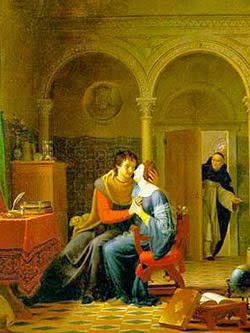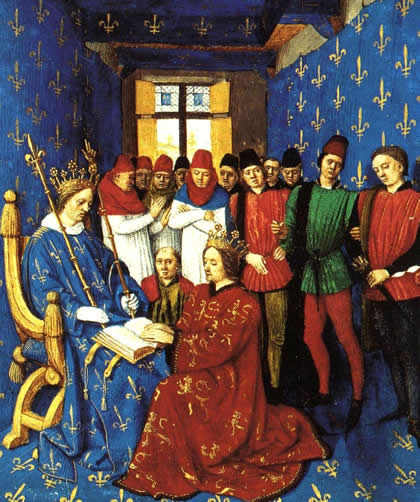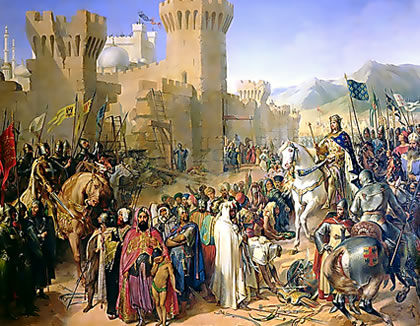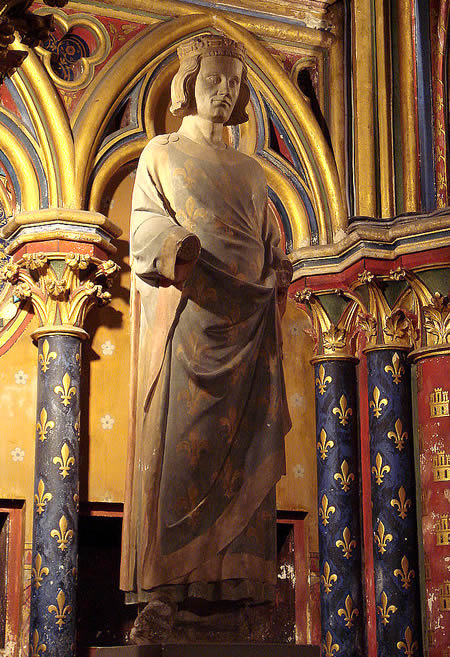 |
| French East India Company |
The French East India Company was one of several companies created to promote Western European commercial interests in Asia, particularly in India, beginning in the 17th century.
Lured by Spanish and Portuguese traders’ tales of lucrative spice exports from the European and other Asian markets.
France entered the Asia trading arena significantly later than Great Britain, which founded the British East India Company in 1600, and the Netherlands, which founded the Dutch East India Company (Indonesia/ Batavia) in 1602. While France attempted to cultivate trade connections with Asia in the early 17th century as well, initial expeditions failed to secure any trading posts or settlements.
  |
During the reign of King Louis XIV (1643–1715), however, Jean-Baptiste Colbert
Colbert sent an expedition that reached India in 1668 and built the first French factory (production center) in Surat on the western coast, and soon after another in Masulipatam on the eastern coast. In 1673, the company established its headquarters in Pondicherry, on the southeastern coast below Madras (now Chennai), and founded Chandannagar on the northeastern coast, north of Calcutta.
Madras and success rivaling that of Calcutta.
While France never became the dominant European authority in the region, for more than 50 years the French East India Company made great efforts to capitalize upon the expanding demand for textiles, dyes, and other goods that could be supplied by Indian merchants.
French accounts of the activities in port towns such as Surat detail the intricate steps involved in creating the fabrics, known collectively as indiennes (Indians). Particularly on the southeastern coast, Indian weaving villages generated thousands of bolts of textiles for eager European companies.
Most in demand were guinee cloths (cotton longcloth, usually 35 to 50 m in length), salempores (staple cotton cloth), and morees (cotton cloth of superior quality). Also coveted were the stunning toiles peintes (painted cloths) and toiles imprimés (printed cloths), as well as the magnificent silks and dyes.
The textiles were adored not only in Europe, but also in other parts of Asia; indeed, India had engaged in Asian textile trading centuries before Europeans arrived. In the Indonesian archipelago, China, and Japan, Indian cotton was popular for its lightweight, yet sturdy qualities.
In due course, the French, British, and Dutch acquired materials from India not only for their home countries, but for transport to Malacca or Java, for example, where they were traded for spices—cloves, nutmeg, mace, sugar, and pepper—crucial in Britain and Europe to preserve meats during harsh winters.
By the 18th century, the French had secured agreements to provide woven products tailored to Asian buyers’ interests: they had colored, patterned handkerchiefs specially woven for particular island markets, for example, which proved a successful entrepreneurial venture. Moreover, cloths of different types played a symbolic role in rites of passage and were sought after for use in birth, marriage, and death ceremonies, and bolts of cloth were commonly given as offerings or gifts.
A salient corollary to the French East India Company’s textile exchange is that its movements between Asia and Europe also supported the exchange of slaves. While the slave trade is often described as triangular, with the three corners Europe, Africa, and the Americas (the “New World”), trade between Europe and Asia also helped to sustain slavery.
French ships traded European goods in Asia, where they acquired cowry shells and Indian textiles highly valued in West Africa. Traders exchanged these goods in Africa for slaves, who were sent to France’s colonies in the Americas. “The circle was completed,” notes the Yale Center for the Study of Globalization, “when sugar and other goods from the Americas were loaded on board and shipped back to France.”
In commencing trade with India, the French East India Company entered an already well established, complex economic system, an intricate network of production, negotiation, delivery, and distribution. Indian merchants operated large commercial fleets as well as prosperous shore-based businesses.
Inland weavers and merchants worked with overland freight deliverers and brokers, who worked with shipowners and exporters. All of these agents had to negotiate with local politicians and state officials for commercial privileges.
Regional and individual trading groups developed their own intra- and intercountry rules and practices as well. In order to gain access to the goods they desired, moreover, the French had to learn these rules and practices and successfully collaborate with indigenous envoys.
The French were able to develop manufacturing centers in various Indian states, but cooperating with Indian middlemen sometimes proved trying. In addition to conflicts between French traders and middlemen, clashes between traders and local authorities (and between middlemen and local authorities) often impeded successful business transactions.
The Dutch and the English had mastered the art of working with indigenous traders, shippers, and rulers much earlier than the French, and although their interactions were was not always seamless, they operated with that distinct advantage. In most of the towns and ports in which the French operated, there were also English and Dutch associates.
Where there was a French factory, there were likely to be English and Dutch factories as well. At the peak of the Indian trade, during which the demand for Indian goods exceeded the volume weavers and other artisans could produce, the presence of several East India companies, even in the same town, did not lead to serious rivalry.
As the three companies grew more competitive, however, the Dutch and particularly the English, better funded and more conversant in local business etiquette, were able to expand their factory outposts to larger industrial towns under their jurisdiction. These commercial strongholds became political enclaves, eventually enabling Great Britain to consolidate its power and control throughout India.
Despite its numerous settlements, after the death of Louis XIV, the French economy faltered and by 1719, the French East India Company was nearly bankrupt. The French East India Company resumed its independence in 1723.
While the British East India Company began as primarily a trading company, it increasingly became a governing power. As the British expanded not only economic but also political and colonial influence, tensions between Britain and France grew.
In 1742, Joseph Dupleix
The battle for supremacy led to a series of military conflicts between France and Britain, with triumph and defeat alternating between the two. In 1747, the French besieged and captured Madras. In 1751 and 1752, however, Englishman Robert Clive dislodged Dupleix’s forces in Arcot and Trichinopolgy, taking many French prisoners.
In 1754, the French government, anxious to make peace, recalled Dupleix to France. During the next half-century, British forces further colonized and forcefully subjugated much of India. While several Indian ports remained under French directive, Britain became the definitive Western authority of the Indian subcontinent.
Clive’s victory in the Battle of Plassey in 1757, which brought the state of Bengal under British control, is often cited as the landmark turning point of the British colonial heyday in India. Bereft of both authority and capital, Dupleix returned to the country for which he had so vigorously labored and died penniless in 1763.
Despite its earlier successes in both inter- and intra-continental trade, the French East India Company never regained its former eminence. Ultimately, King Louis XV




















